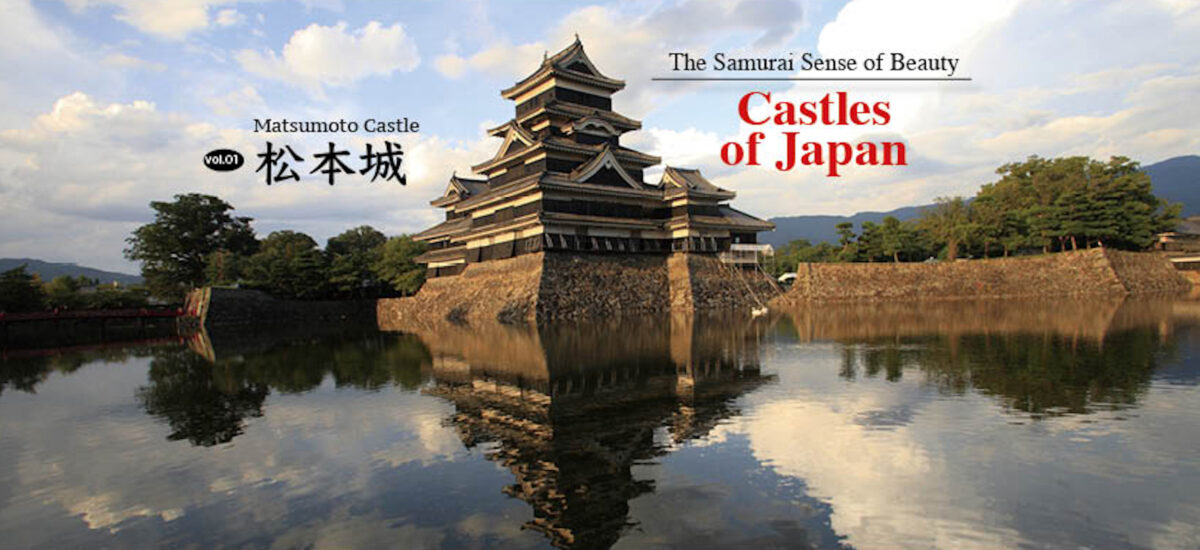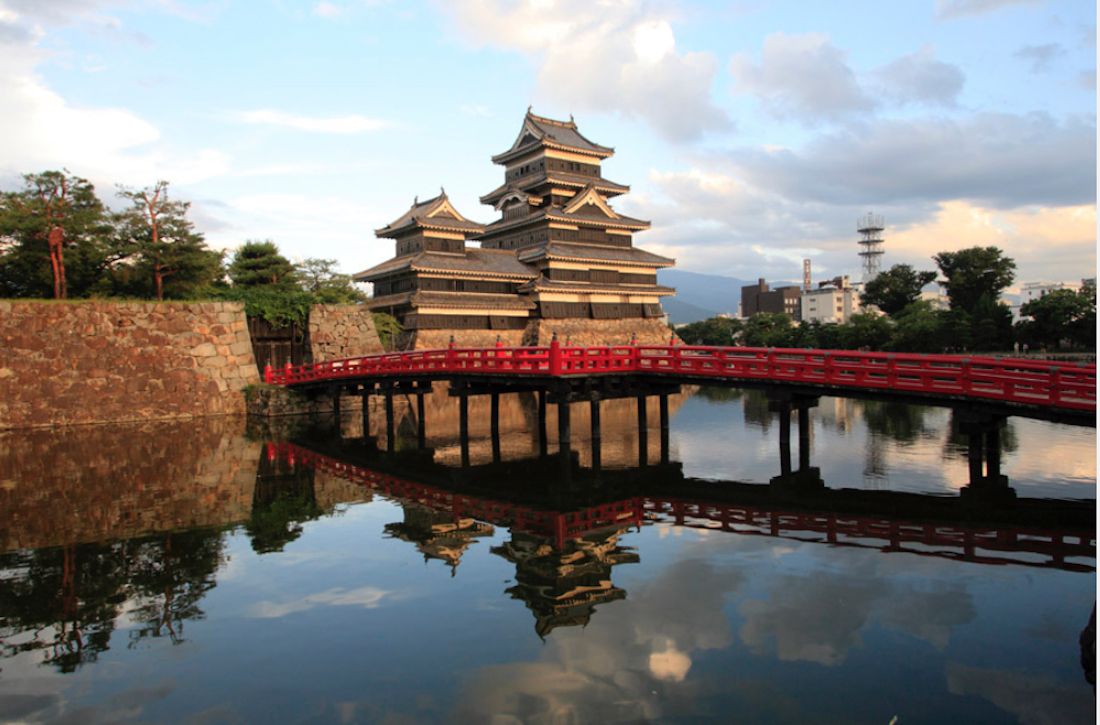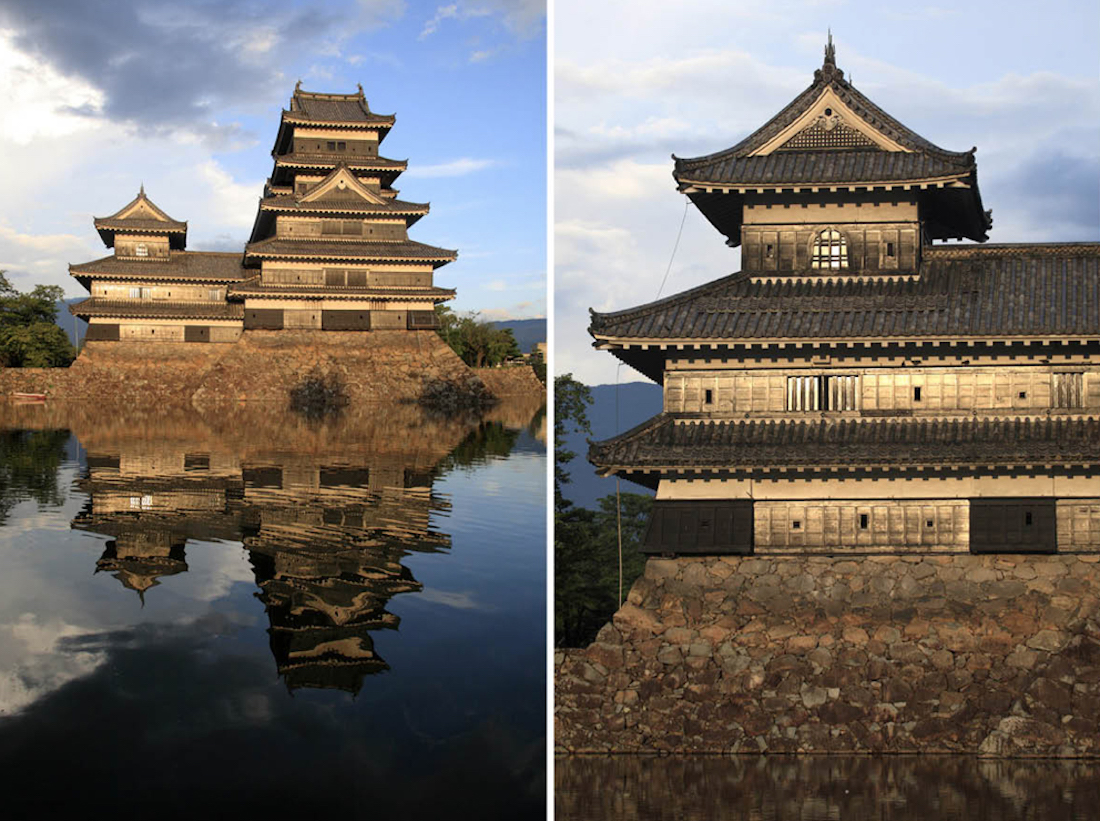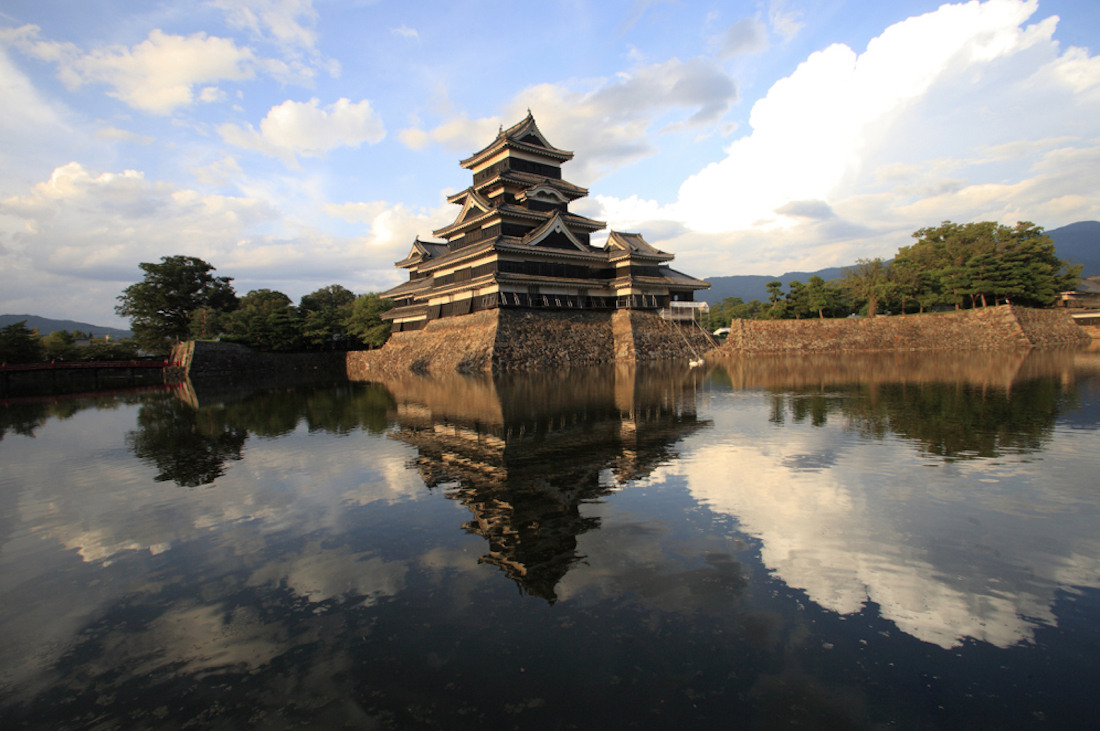

There was a time when tens of thousands of castles stood proudly in Japan. Most of those historical edifices have long since been destroyed, and many that now remain are reconstructions or replicas of what used to be. In the entire country, only twelve castles remain as they were when they were built. The sight of these beautiful original castles strikes a chord in the hearts of all who see them.
Photos : 青柳健二 Kenji Aoyagi / English version : Judy Evans
Keyword : Samurai / Japanese Castles / Matsumoto Castle / Matsumoto City / Castles of Japan Series

A National Treasure: Japan’s oldest intact castle complex
Matsumoto Castle, the jewel of the Northern Alps city of Matsumoto, is a flat-land castle occupying pride of place in the centre of the city. Theories abound as to the history of its construction, but what we do know is that Kazumasa Ishikawa, first generation daimyō (feudal lord) of the Shinano Matsumoto Clan began building the castle on the site of the old Fukashi Castle in 1590, with the main keep completed by his son, Yasunaga, in 1592.
Matsumoto Castle pre-dates the construction of Himeji Castle by around ten years, and both castles have the same five-tier six-storey configuration in their main keep – the only two of the original remaining castles in Japan with this feature. At first glance, the main keep of Matsumoto Castle appears to be five storeys, but there are actually three floor levels concealed in the top two tiers.
The style of construction of Matsumoto Castle is known in Japanese as renketsu-fukugō-shiki. In the renketsu style, smaller buildings within the complex are connected to the main keep via a battlement wall or possibly a covered galley, whereas in the fukugō style, the smaller buildings are directly attached to the main keep. As the name implies, Matsumoto Castle mixes both styles.
To survive the Warring States Period (1467-1603), Matsumoto Castle had to be built for battle. The castle is surrounded by moats, with watchtowers and castle gates above fortified earthen embankments and stone walls. The walls of the keep, which were furnished with slots from which weapons could be fired, are up to 30 cm (1 ft) thick.
This was to prevent ammunition fired at the castle from hinawa-jū matchlock-arquebus guns from passing through the walls. The firing range of these weapons was approximately 60 m (198 ft) – the width of the inner moat that protects the main keep. Anyone attempting to climb the walls from outside would have rocks hurled down on them from the ishi-otoshi openings in the walls of the keep.
These openings appear as integral sections projecting out over the stone walls from the lower walls of the keep – wide enough for sizeable rocks, but too small to crawl through.
The upper part of the walls of the keep are white plaster, and the lower part is black lacquer, which has to be reapplied every year. The stark simplicity of these two colours gives the castle a sense of tranquility, as well as its nickname, Karasu-jō (Crow Castle). Kazumasa Ishikawa and his son, Yasunaga, are said to have decided on the colour as a sign of loyalty to Hideyoshi Toyotomi, whose castle at Ōsaka was black.
Three moats surround the castle, and the sight of the castle reflected in the inner moat with the Northern Alps in the background attracts many visitors, both from Japan and abroad. This inner moat protects the honmaru (main enclosure), which is where the main keep is located, with the ni-no-maru (second enclosure) contained within the outer moat. The san-no-maru (third enclosure) was the area directly inside an all-encompassing third moat, but this moat has now been filled in, and the area developed for housing, offices and businesses.
A decade after the castle was completed, Japan was unified under Ieyasu Tokugawa and the 250 years of peace of the Edo Period (1603 – 1868) ensued. Matsumoto Castle was no longer needed for battle, and in 1633 Naomasa Matsudaira, the then lord of the castle, added the Tatsumi-yagura and Tsukimi-yagura watchtowers, neither of which actually had any defensive function. In fact, the Tsukimi-yagura was intended for moon viewing!
Matsumoto Castle’s combination of structures of different styles built during different eras makes it unique in Japan, and is one of the characteristics that make it a National Treasure. Today the castle complex consists of five buildings, the main keep (tenshukaku), the smaller Inui-kotenshu keep, the Watari-yagura watchtower, the Tatsumi-yagura watchtower and the Tsukimi-yagura watchtower.

Matsumoto Castle – the legacy of the people of Matsumoto
By the Meiji Period, as with most castles in Japan at that time, Matsumoto Castle had become sadly dilapidated. The castle and grounds were sold to land developers who planned to demolish the castle. Concern over the loss of their cherished castle prompted townspeople into action.
Two men were instrumental in saving the castle for future generations. Ryōzō Ichikawa (1844 – 1908), a city official and activist only in his 20s, devised a plan to hold an exposition in the main keep of the castle, and to use the funds generated to buy back the castle. A combination of funds from five expositions, Ichikawa’s personal funds and donations from citizens made the purchase possible.
The project to restore the castle was spearheaded by Unari Kobayashi (1855-1914), principal of Matsumoto Junior High School, which had been built within the Ni-no-maru enclosure in the castle grounds. He led the establishment of the Matsumoto Tenshukaku (Castle) Restoration Association, which saw to the restoration of the severely dilapidated and subsiding main keep. Even now, the citizens of Matsumoto play a big part in the upkeep of the castle, cleaning the grounds and re-lacquering the walls regularly.
Throughout the seasons, Matsumoto Castle and its mountain backdrop stand reflected in the shimmering moat, a testament to the determination of the people who loved this historical structure – and the historical value of Matsumoto Castle is unquestionable. But perhaps the true value of this beautiful castle is as a proud symbol of the people of Matsumoto themselves.

<Matsumoto-jō – Matsumoto Castle> Alternative names: Fukashi-jō (Fukashi Castle); Karasu-jō (Crow Castle) Built: 1590~1592 Built by: Kazumasa Ishikawa; Yasunaga Ishikawa Castle type: Hirajiro (flatland castle) Remaining structures: tenshu (keeps); ishigaki (stone walls); dorui (earthen embankments); hori (moats); dozō (storehouse). Admission: Adults ¥610, Elementary and Junior High Students ¥300. Hours: 08:30~17:00. (Golden Week 08:00~18:00) Closed: 29~31 December Access: 15-minute walk from Matsumoto Station. Volunteer guides: http://www.npo-alsa.com/home-en Website: http://www.matsumoto-castle.jp/lang/








